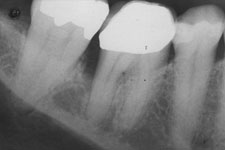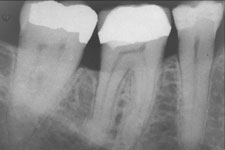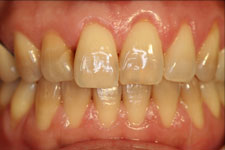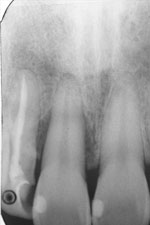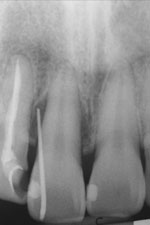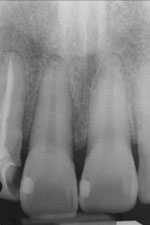Day or night for
24/7 access
7:30 AM to 4:30 PM
Monday through Friday
The goal of periodontal treatment has long been to eliminate disease and establish an environment in which health could be maintained; but over the years, periodontics has broadened its scope. There have been tremendous additions to the treatment "tool belt" that have helped us partner with restorative dentists to return our mutual patients to form and function. Some of these are:
- Regeneration and bone repair
- Restoration of functional dentition and esthetics through placement of dental implants
- Cosmetic repair of soft tissue and hard tissue defects
- Better adjuncts to nonsurgical therapy
- Innovative techniques to aid in orthodontic tooth movement
We put a great deal of emphasis on having as many tools as possible in our office tool belt. But that does not mean we are willing to sacrifice patient comfort and/or long term treatment outcome for the latest "must-have" technology. In that regard, we have in the past kept detailed and comprehensive records so that we can judge the efficacy of our therapy and we will continue to do this in the future. When we give you a long term prognosis for recommended treatment for one of our mutual patients, please know that this is based on data developed over three decades of patient treatment.
In evaluating "New Technologies," we have a number of criteria that must be met before we will add it to our practice armamentarium: It must be more reliable than technology already available or fill a need for which no acceptable treatment exists, be safe and patient-friendly in terms of discomfort and/or constraints upon the patient, and it must also be cost-effective. While a new technique or instrument may allow us to do something faster or be one for which we can charge more, these factors should not and do not influence our decision in their adoption.
Have you heard of something new and want to check it out with us? Please feel free to call either of us about it. If we haven't already tried it and formed an opinion about it, we would be very glad to research new technology and/or therapies for both you and us.
New Growth Factor Regenerative Materials
GEM 21-s is a platelet derived growth factor that we quite commonly use. These are the before and after radiographs of a recent case, involving a molar that needed a new crown. The restorative dentist was hesitant to proceed because of the advanced bone loss the tooth had suffered. Note the improvement of the bone level and concommitant improvement in the long term prognosis of the tooth after successful use of GEM 21-s.
Pre-Op |
Post-Op |
||||
|
|
In another case, this patient was referred because of mobility and a deep palatal pocket on the central incisor. Initially, it was thought this could be due to a fractured root, but the radiograph showed bone loss in a wide area around the tooth. The gutta percha tracer demonstrated the extent of the bone loss on the root surface.
Opening a flap on the tooth, there was calculus along the root surface that had caused an extensive, localized periodontal defect on the palatal aspect of the tooth which wrapped around both to the mesial and distal. GEM-21s was used to regenerate the lost bone support, and the patient followed throughout the post-surgical course. After one year, the radiograph shows good bone regained in the defect. Clinically, the pocket depth decreased to 3 mm on the palatal, and there was no mobility.
Pre-Op |
Post-Op |
||||
|
|
Pre-Op |
Pre-Op |
Post-Op |
||||||
|
|
|
We are also now evaluating the long term success of Infuse bone morphogenic growth factor (Medtronic). Please be aware that we are quite careful in evaluating new materials and techniques. It may be several months - or, in some cases, years - before we can confidently predict the outcome of a surgical case employing a new material. We track each patient, and take follow-up radiographs at appropriate intervals to monitor the long term healing and success. Usually we ask the patient to return to our office for this evaluation; but in some cases, when the patient has been entirely returned to your office for dental care, we may ask you to take radiographs and send them to us for review at appropriate intervals. This is so we can continue monitoring the outcome of our therapy as well as continue to evaluate newer materials. When we do take follow-up films, please be assured you will get a written report on our re-evaluation and comparison of radiographs.
